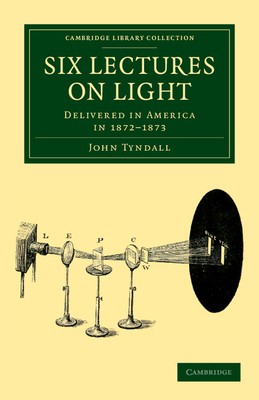
- We will send in 10–14 business days.
- Author: John Tyndall
- Publisher: Cambridge University Press
- ISBN-10: 1108038433
- ISBN-13: 9781108038430
- Format: 14 x 21.6 x 1.7 cm, minkšti viršeliai
- Language: English
- SAVE -10% with code: EXTRA
Reviews
Description
Born in Leighlinbridge in Ireland, John Tyndall (1820-93) was a brilliant nineteenth-century experimental physicist and gifted science educator. He worked initially as a draughtsman, then spent a year teaching at an English school before attending the University of Marburg to study physics and chemistry. Tyndall carried out important research on magnetism, light and bacteriology. Among his many significant achievements, he demonstrated the greenhouse effect in Earth's atmospheric gases using absorption spectroscopy. He was a skilled and entertaining educator and as Professor of Natural Philosophy at the Royal Institution he gave many public lectures and demonstrations of science. Published in 1873, this book features six accessible lectures on light. They explore a wide range of ideas in a non-technical way, from basic scientific theories through magnetism and light scattering, to analytical spectroscopy. The book ends with a series of essays on special topics, and includes a detailed index.
EXTRA 10 % discount with code: EXTRA
The promotion ends in 22d.15:58:00
The discount code is valid when purchasing from 10 €. Discounts do not stack.
- Author: John Tyndall
- Publisher: Cambridge University Press
- ISBN-10: 1108038433
- ISBN-13: 9781108038430
- Format: 14 x 21.6 x 1.7 cm, minkšti viršeliai
- Language: English English
Born in Leighlinbridge in Ireland, John Tyndall (1820-93) was a brilliant nineteenth-century experimental physicist and gifted science educator. He worked initially as a draughtsman, then spent a year teaching at an English school before attending the University of Marburg to study physics and chemistry. Tyndall carried out important research on magnetism, light and bacteriology. Among his many significant achievements, he demonstrated the greenhouse effect in Earth's atmospheric gases using absorption spectroscopy. He was a skilled and entertaining educator and as Professor of Natural Philosophy at the Royal Institution he gave many public lectures and demonstrations of science. Published in 1873, this book features six accessible lectures on light. They explore a wide range of ideas in a non-technical way, from basic scientific theories through magnetism and light scattering, to analytical spectroscopy. The book ends with a series of essays on special topics, and includes a detailed index.


Reviews